 |
 |
 |
 |
 |
 |
 |
 |
 |
 |
Bio |
Art |
Fantasy |
Covers |
Munchausen |
Stuff |
Us |
Pyle |
Tomorrows |
 |
 |
 |
 |
 |
 |
 |
 |
 |
 |
Bio |
Art |
Fantasy |
Covers |
Munchausen |
Stuff |
Us |
Pyle |
Tomorrows |
|
|
|
Richard Martin's fascination with World's Fairs comes from his many interests (sculpture, painting,architecture and stereoviews, among others) that converge on such expositions. The immense creative effort expended on planning, building and decorating a small city that will exist for only a year or two is an amazing achievement. Add all the ancilliary material created around the event - banners, posters, photos, jewelry, toys and other souvenirs- and each fair becomes a treasure trove of collectibles. Of course, some fairs are better than others... 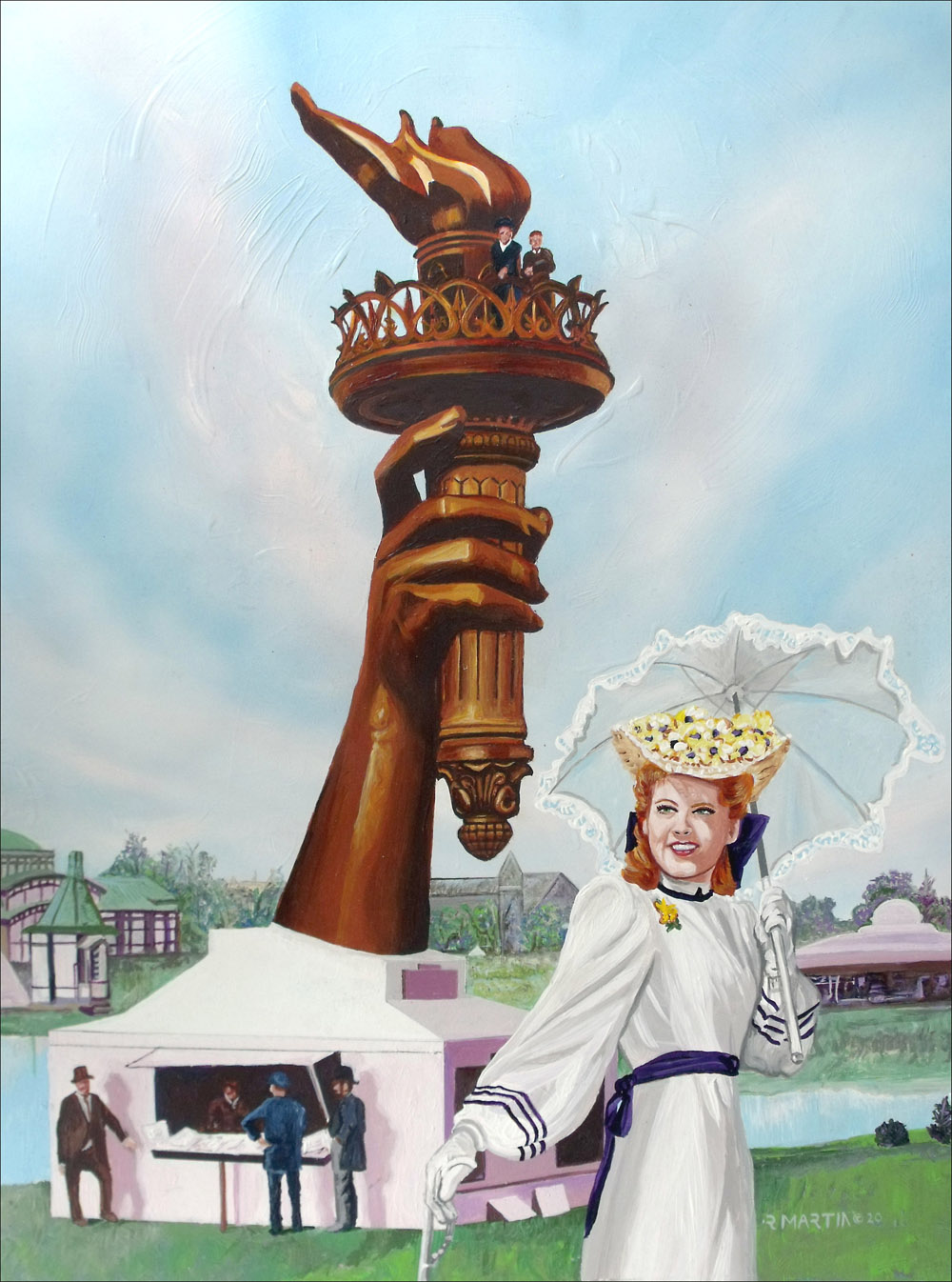
The first official World's Fair to be held in the United States, the 1876 Centennial Exposition celebrated the 100th Anniversary of the signing of the Declaration of Independence in Philadelphia, PA, from may 10 to November 10 1876. Thirty Seven countries participated, and over 10 million visitors attended. Sculptor Frederic Bartholdi displayed the full size right arm and torch of the Statue of Liberty. For 50 cents visitors could ascend to the top of the torch, and the money raised was used to help pay for the pedestal of the statue.  The Dream City The 1893 World's Columbian Exposition in Chicago influenced American architecture and design for decades. In order to create a panoramic view of the fair, Mr. Martin spent many months researching it through photographs and prints. The resulting painting is shown here:  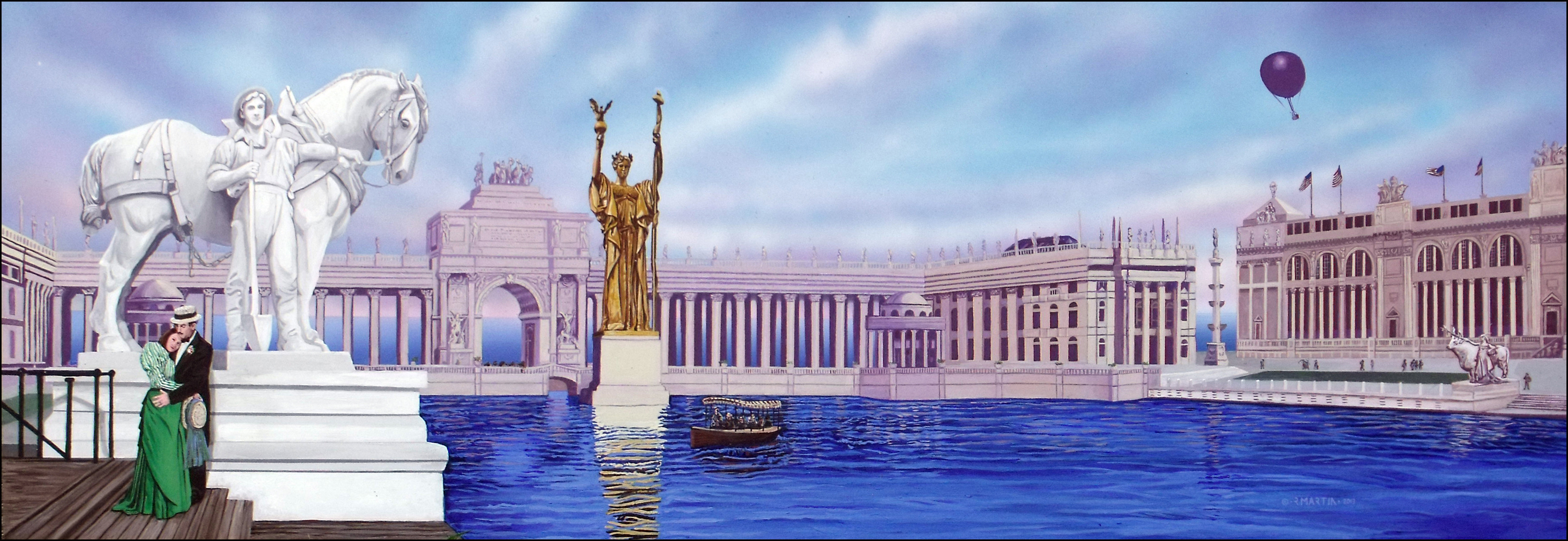 Click on the image for a detailed view 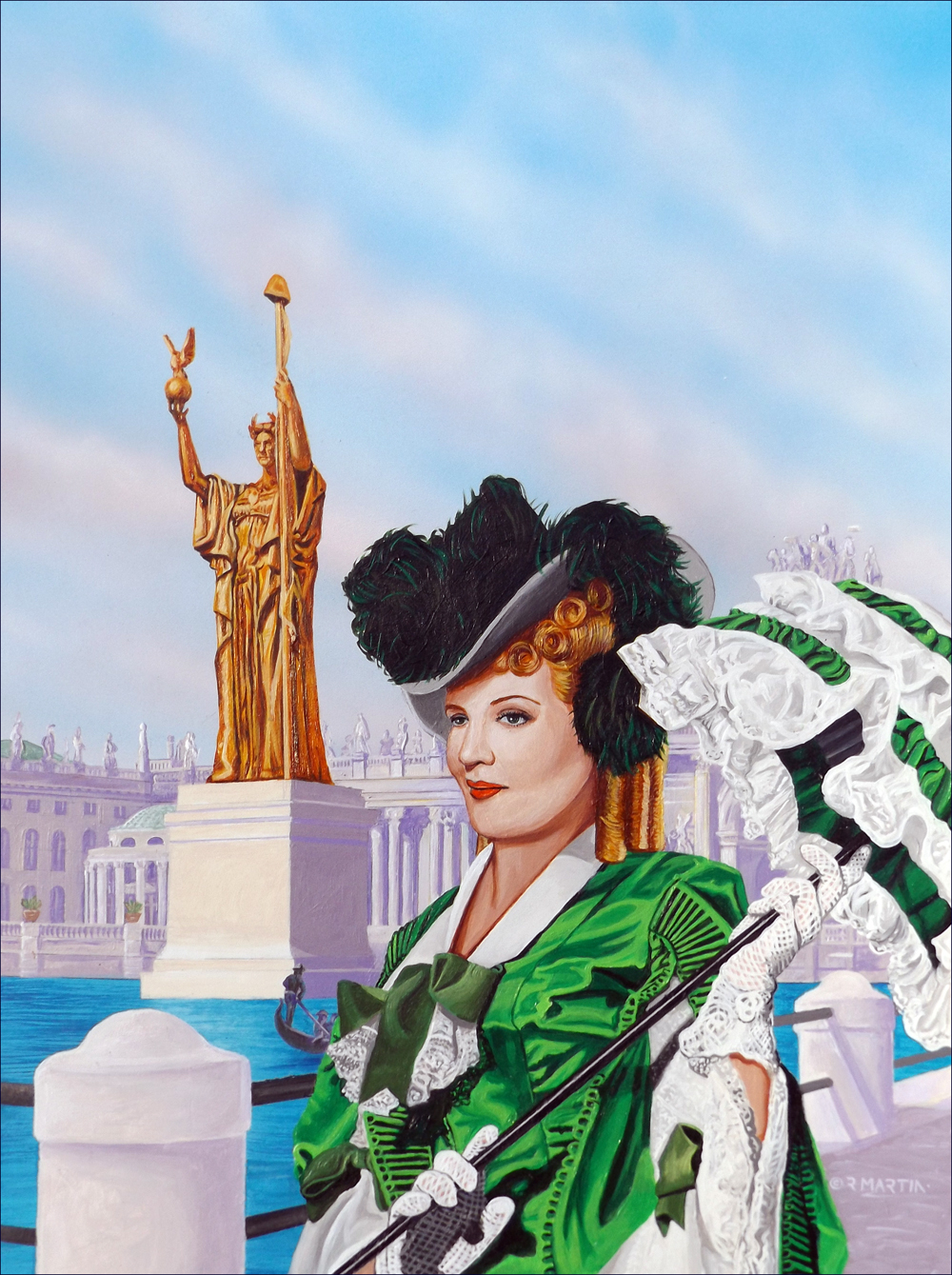 The sculpture program of the 1893 Exposition, headed by Augustus St. Gaudens, utilised such masters as Daniel Chester French, Edward Potter and Frederick MacMonnies. The centerpiece of the fair was French's Statue of the Republic, a smaller replica of which is still on display in Chicago today.  World of Tomorrow The 1893 fair was the "Beaux Arts" Fair. The 1939-40 New York World's Fair was the "Art Deco" Fair (in America, anyway; the term -actually popularised in the late sixties- came from the 1925 Exposition Internationale des Arts Décoratifs et Industriels Modernes (International Exposition of Modern Decorative and Industrial Arts) in Paris, France. Perhaps it can be more particularly called the "Streamline Moderne" Fair. The general ambience of the architecture and sculpture of the 1939 Fair can still be experienced through a vist to Rockefeller Center in New York, New York. Mr. Martin created another wide panoramic painting of this Fair focusing on the iconic Trylon and Perisphere: 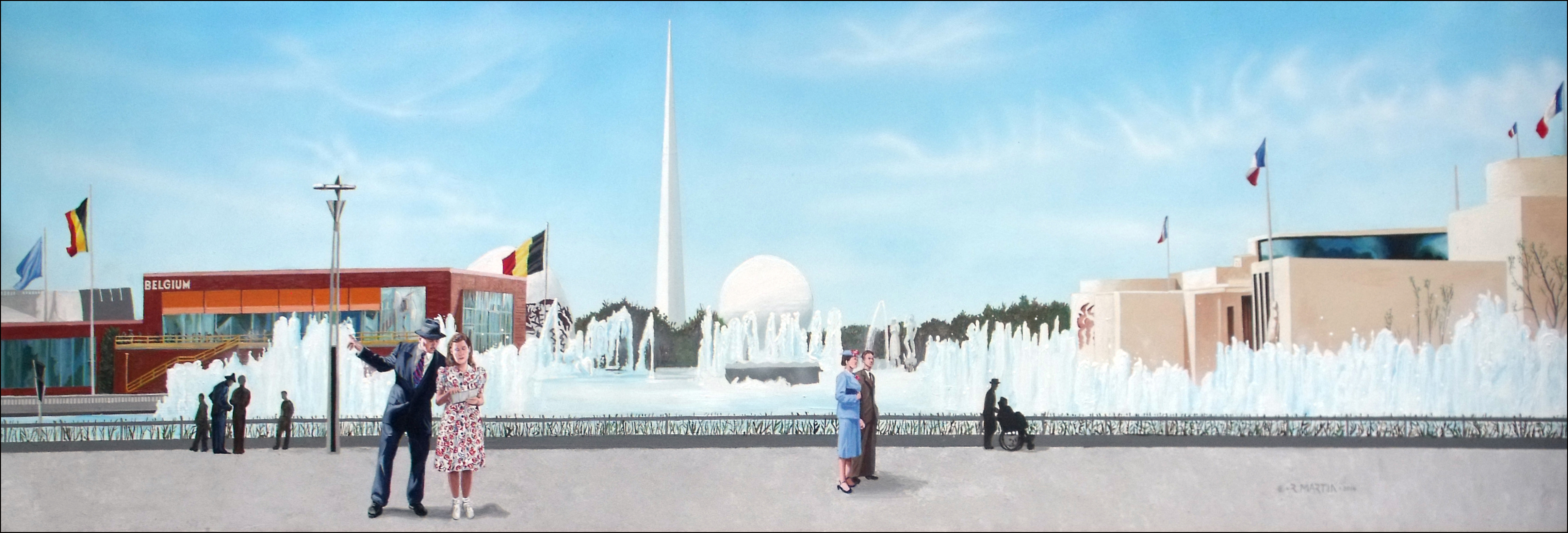  Dawn of a New Day 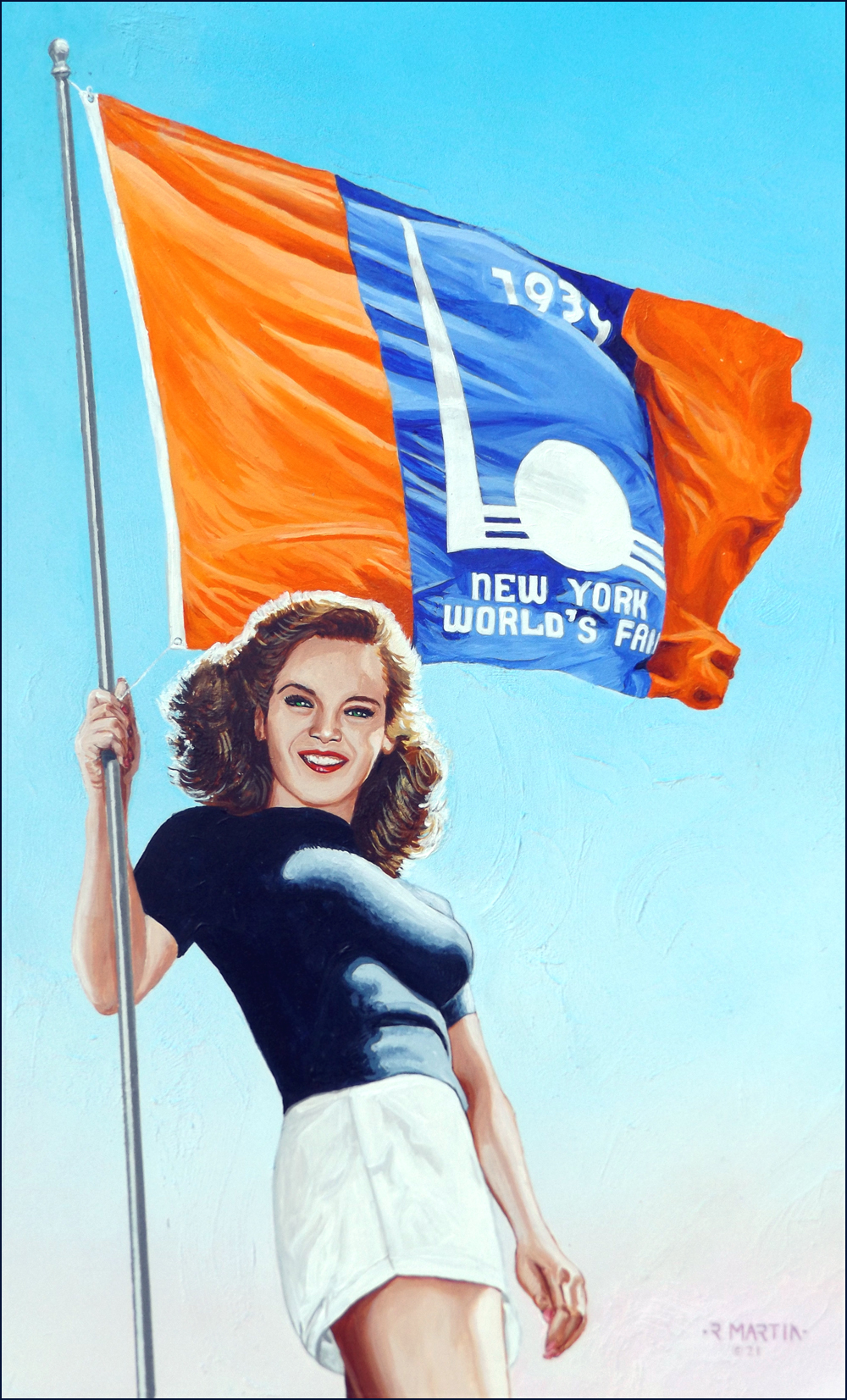  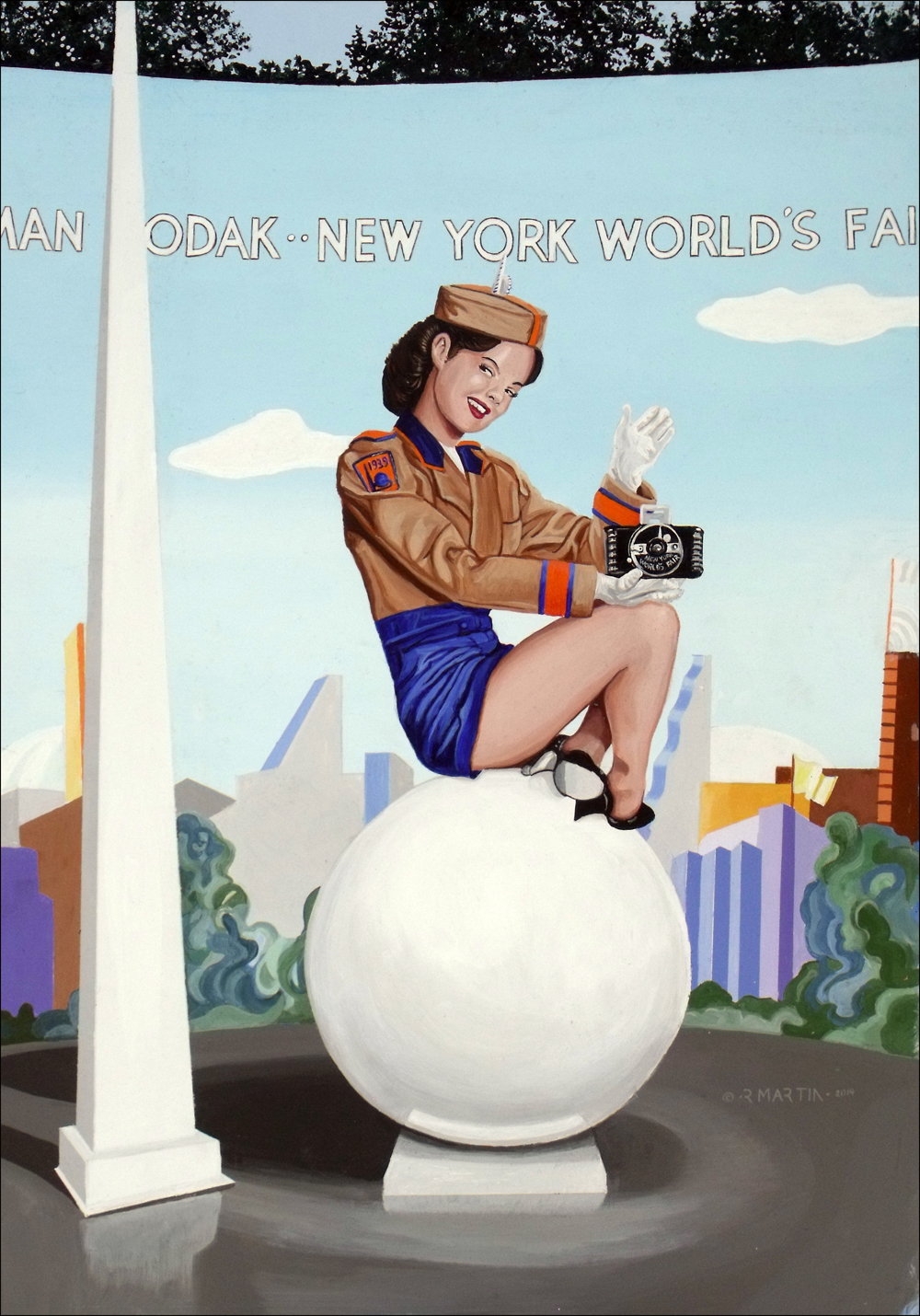 The Kodak Pavilion featured a model of the Trylon and Perisphere that visitors could use for their souvenir pictures. In this painting the souvenir World's Fair Kodak camera is on display:  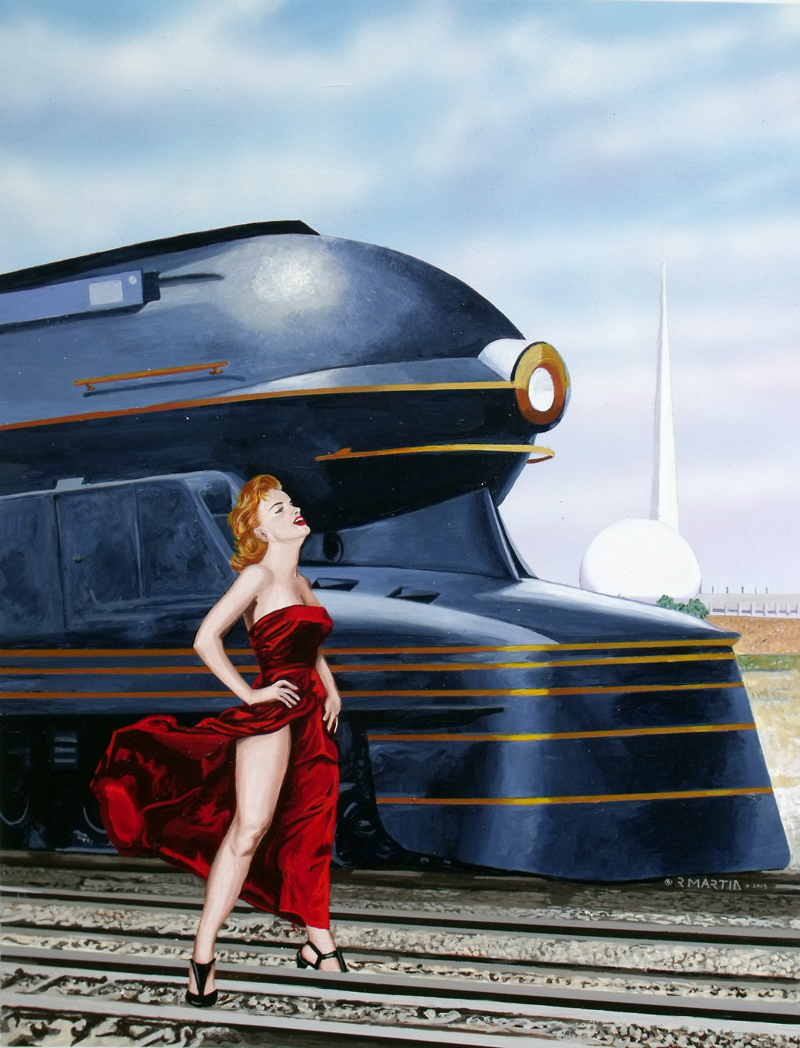
"Streamline Moderne" is a good title for this work, showcasing the Pennsylvania Railroad's S1 Bullet Train, on display at the 1939 World's Fair grounds. It's streamlined art deco style was designed by Raymond Loewy. The locomotive was mainly used for publicity purposes, as it was so large it could not negotiate the track clearances on most of the Pennsylvania railroad's lines. It's last run was in December of 1945, and the engine was scrapped in 1949. The impression of speed is so great that it seems to be moving even when standing still.  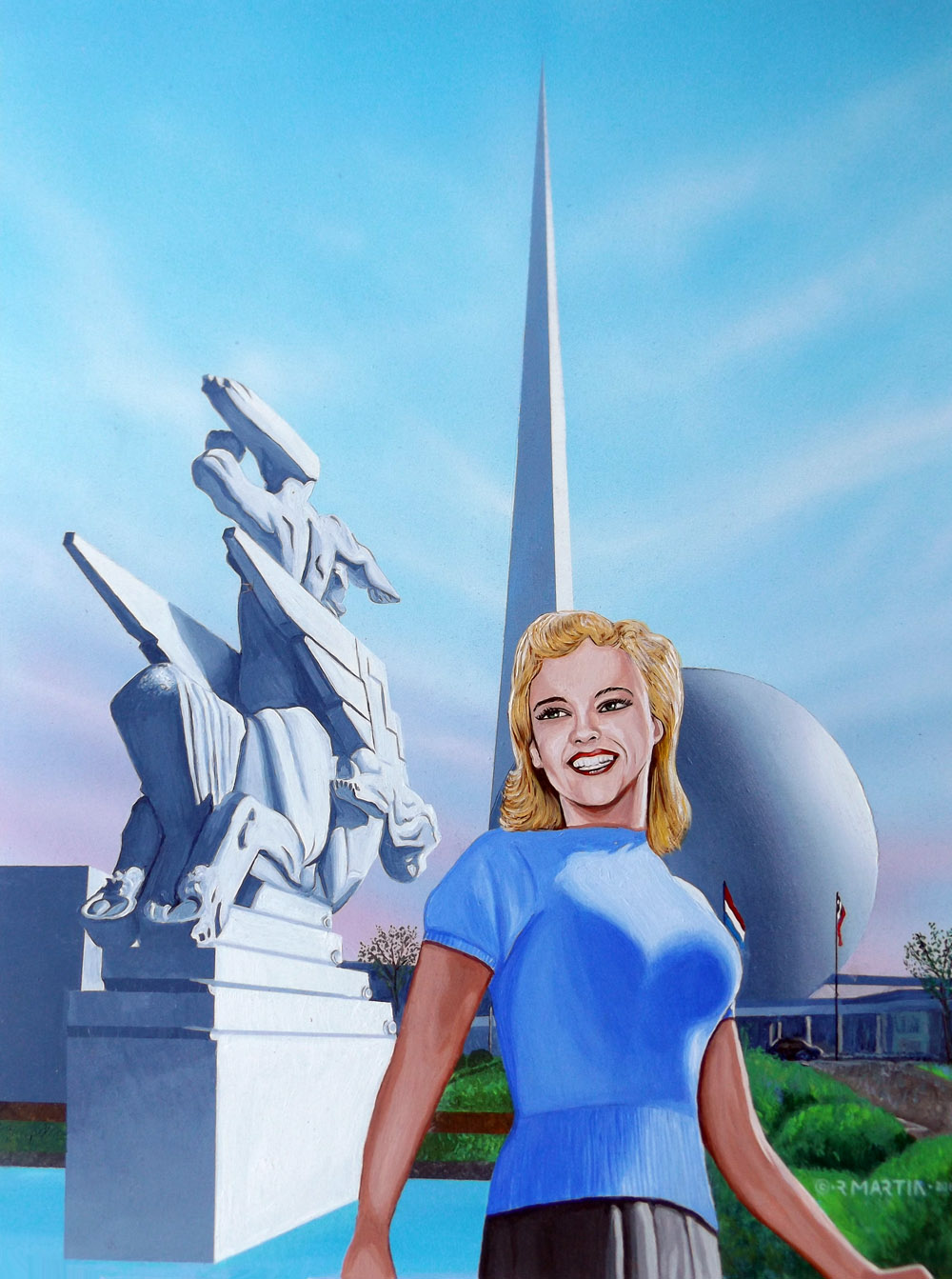 Joseph Renier's sculpture, Speed, facing the Trylon and Perisphere, exemplifies the Art Deco style. 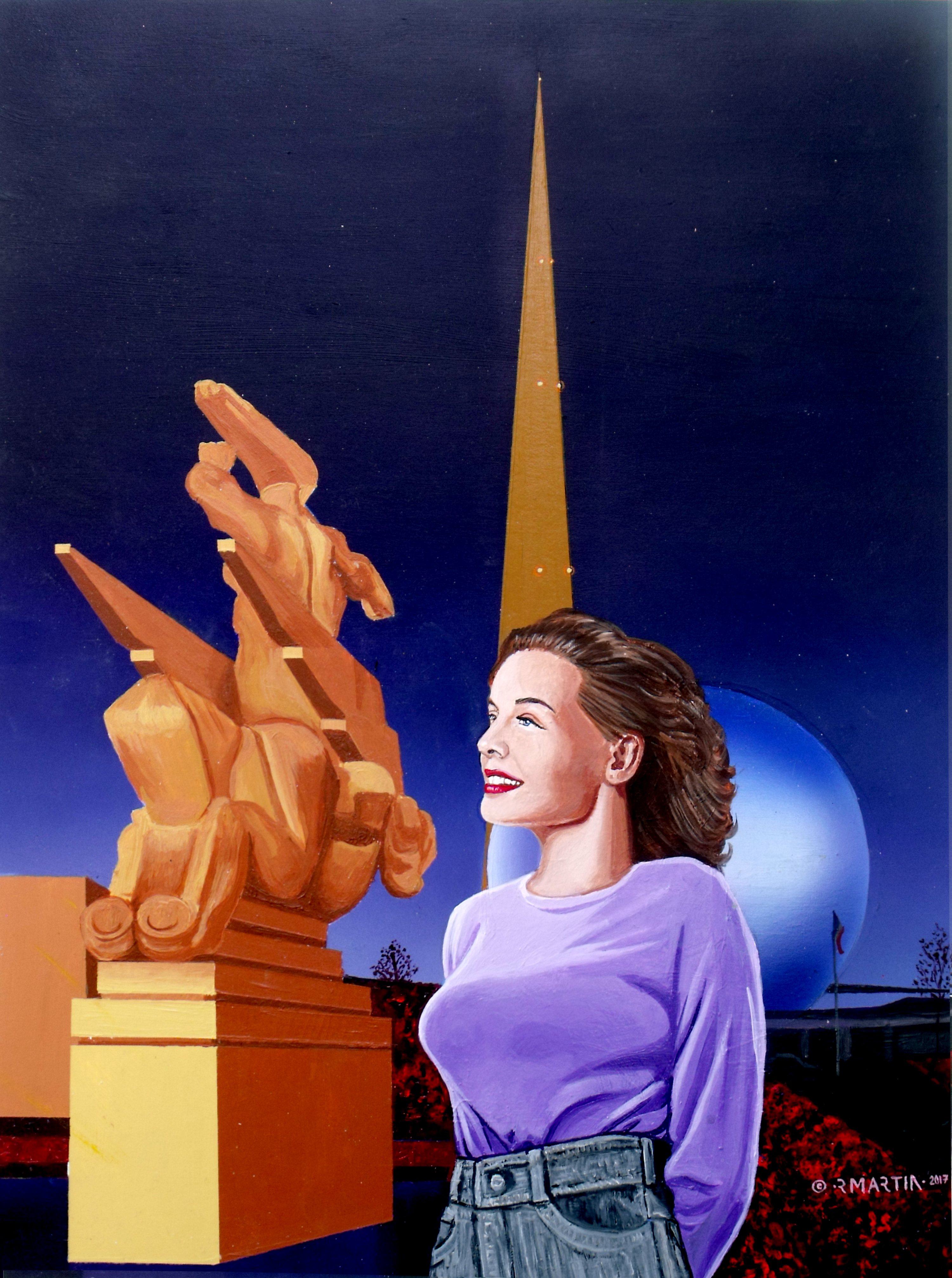 | Return Home | Artist's Bio | Stamp Art | SF Fantasy | Other Covers | Baron Munchausen | Kid Stuff | Contact Us | Howard Pyle | Yesterday's Tomorrows | |
||
